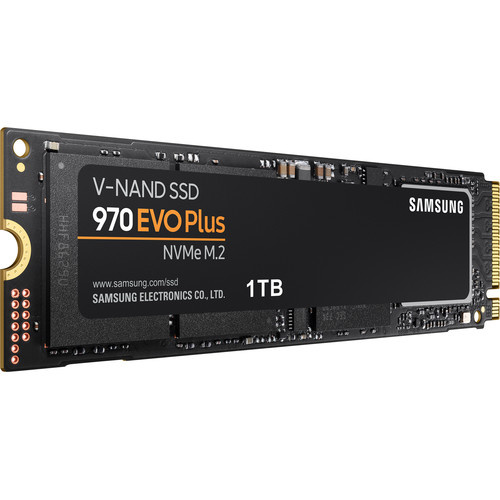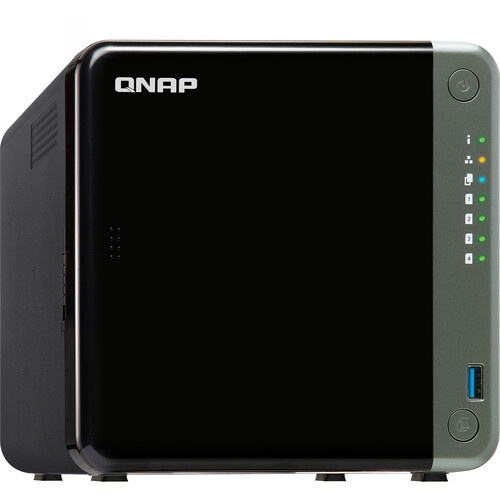Whether you’re shooting 8K video or are just coming back from a shoot with 1,000 images to sort through, your digital asset management strategy has to be on point. Over the last few years, technology and standards have advanced quite a bit, and it’s easier than ever to create a powerful, versatile, and safer approach to storing your files, but it can also be confusing. This guide will take a look at the standards you have to know when upgrading your storage.
Why Go Faster?
If your existing storage setup is already working for you, you might be thinking: “Why do I need more speed? Back in my day, we had USB 2.0 and we were happy!” The answer is that a confluence of factors has made this chance to upgrade speeds not only affordable but impactful to your editing workflow. Faster-than-gigabit Ethernet, previously the domain of enterprise-level of equipment, now can be less than $100 for an add-in card, while a switch like QNAP’s QSW-M2108 can bring 10 Gbps and 2.5 Gbps speeds to your entire network with its 10 ports.
USB-C, Thunderbolt, and falling SSD prices have all made quick transfers and storage cheap and easy. If you’re traveling, the greater vibration resistance of SSDs compared to portable hard drives makes them a great choice for a backup drive, while the greater speed makes it easy to edit right from them.
Faster imports, transfers, and backups all confer workflow advantages. Being able to work on your images more quickly is the obvious benefit, but another major perk is that it’s easier to set up an effective backup solution and stick to it. If you find any backup method too difficult or slow, you’re not going to keep it up, putting your images at risk.
Faster Connections
There’s been a couple of major areas of improvement when it comes to storage and transfer technologies, including both the interface (basically how info gets sent over the cable) and medium (where that data gets stored once it’s on the device). Some of these have been around for a couple years now, but others are just hitting the point of common affordability.
The first is probably the tech that has been around for the longest, but serves both as a great introduction to the order of magnitude improvements in speed, as well as a major factor in the need for other advancements that we’ll be looking at. The tech in question? Flash storage. As you’ve probably already heard of SSDs, I’ll keep things brief. SSDs offer far greater read and write speeds as well as much higher I/O rates compared to hard drives. 
As SSDs have continued to get even faster, they’ve moved to new connectors and form factors, including M.2 and NVME, along with the recent shift to PCI-E 4.0. What those all mean for the end-user is a much faster experience, particularly when these drives are used for the install of your operating system, programs, and files you’re actively working on. Just as a broad guideline, consider an SSD with at least 1 TB of storage and speeds over 3,000 MB/s. This would mean enough space to hold all your programs and a large amount of images or video, as well as offering over 10x the speed of a conventional hard drive. There’s a number of competent drives on the market, with Samsung’s 900 series drives being a premium choice.
Considering you can get 1 TB memory cards these days, a 1 TB SSD probably isn’t enough to store all your images, but going all NVME SSDs is impractical from both a cost and connection perspective. This is where hard drives come in. It’s also where I’d urge you to resist the temptation to just get a single external drive and call it a day. While that might be the easiest way to add some storage, it’s both slow and a single point of failure.
Storage Upgrades
Instead, consider adding a NAS or DAS product to your setup. A NAS, or network-attached storage, is basically a mini computer, with a bunch of spaces to install hard drives, while a DAS is just a box that can connect a number of drives to your computer.
While the ancillary benefits of a NAS could be an entire article itself, for the purposes of this piece, we’ll just be looking at how they can help you work with data more quickly and safely than those single-drive options. By bringing together multiple drives in one appliance, you can use RAID, a technology that splits up data across multiple disks, to protect against drive failures and improve speeds. Different RAID levels store that data differently, with some offering more speed, while others prioritize more data redundancy.
While you can already combine disks with RAID in your computer, by moving them onto a NAS, you get access to that storage on your laptop and phone as well, helping defray the cost of cloud storage or storage upgrades for your other devices.
A NAS can offer a great way to expand storage, as well as share it with your whole home network, but if it’s bottlenecked by a slow connection, that’s no good! Here’s where that previously mentioned Ethernet upgrade comes in. Most home networks are set up with gigabit Ethernet, which just doesn’t cut it for networked storage. At the 125 megabytes per second that connection is capable of, even one hard drive can saturate the link. 
In the past, upgrades beyond that speed were very expensive and could even require fancy connections and cabling to support things like fiber, but now, 2.5 GbE ports are available on very reasonably priced devices, like the QNAP TS-453 and the MSI B550 Tomahawk motherboard. With those ports “teamed,” you can get speeds over 500 MB/s, making it easy to edit video and move around huge files effortlessly. For a step beyond, consider checking out 10 GbE cards, particularly if you’re using a single computer for editing and a NAS capable of saturating slower links.
Conclusion
Tech upgrades can be a bit of a treadmill, with the latest and greatest always right around the corner, but what’s available today at a reasonable cost really does make a difference in usability over the existing standards. If you’ve not moved up to SSDs and faster connection standards like USB-C, Thunderbolt, and 2.5GbE, consider it! For working professionals, upgrading might mean only a few hundred dollars or just keeping an eye on the spec sheet when making your next purchase.
Lead image courtesy of Chris Liverani.